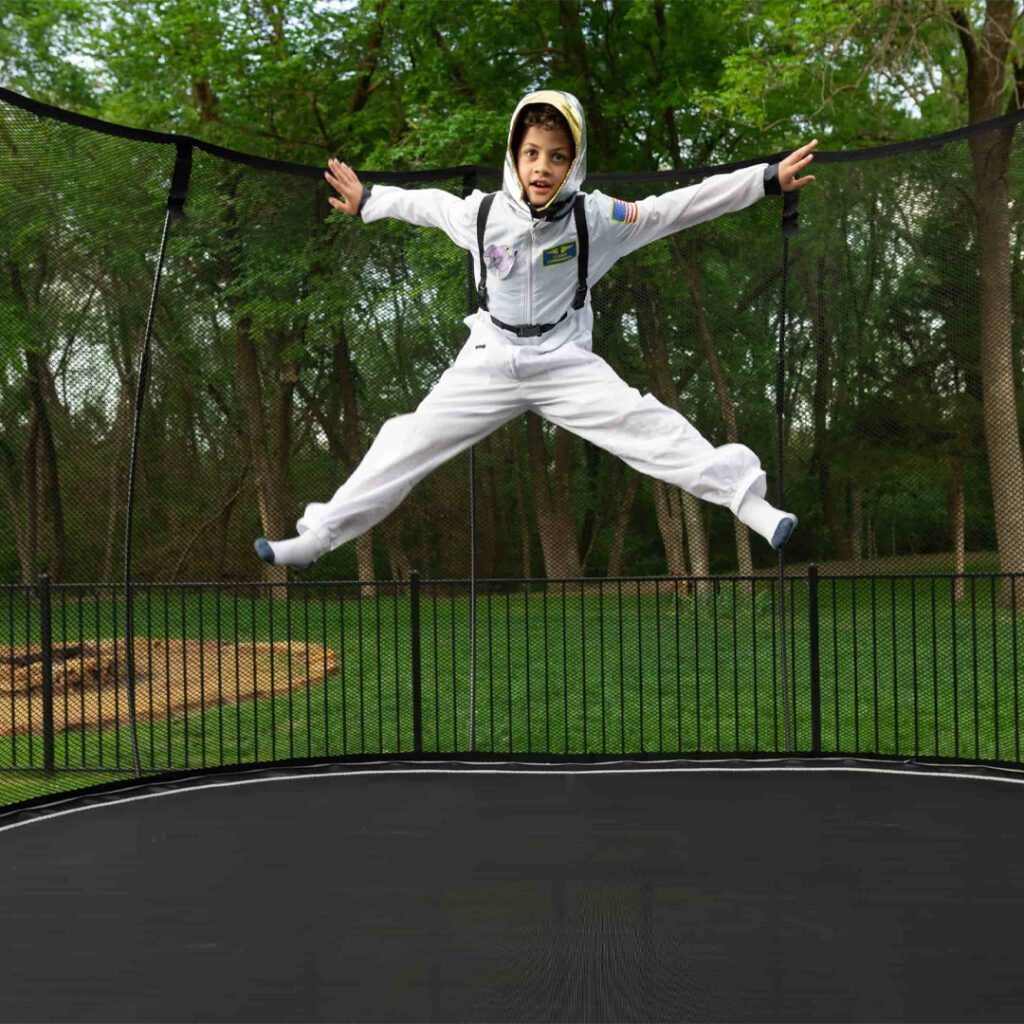
The beauty of a family trampoline is how efficiently they transfer energy. Nearly all the energy from your initial fall is converted into the vertical leap. This is why you can jump so much higher on a trampoline than you ever could on solid ground. The elasticity of the bed squeezes out energy losses, allowing for an almost perfect exchange of energy between your fall and ascent.
The springs around the family trampoline bed add an extra catapult effect. As the bed stretches down, the springs also extend. When the bed begins to rebound upward, the springs contract, releasing their stored energy and contributing an extra boost to your jump. This spring-enhanced lift is what gives trampolines their signature bouncy quality.
In this blog, we’ll be exploring concepts like elasticity and energy transfer to understand what’s happening each time your feet leave the trampoline bed.
Understanding Elasticity
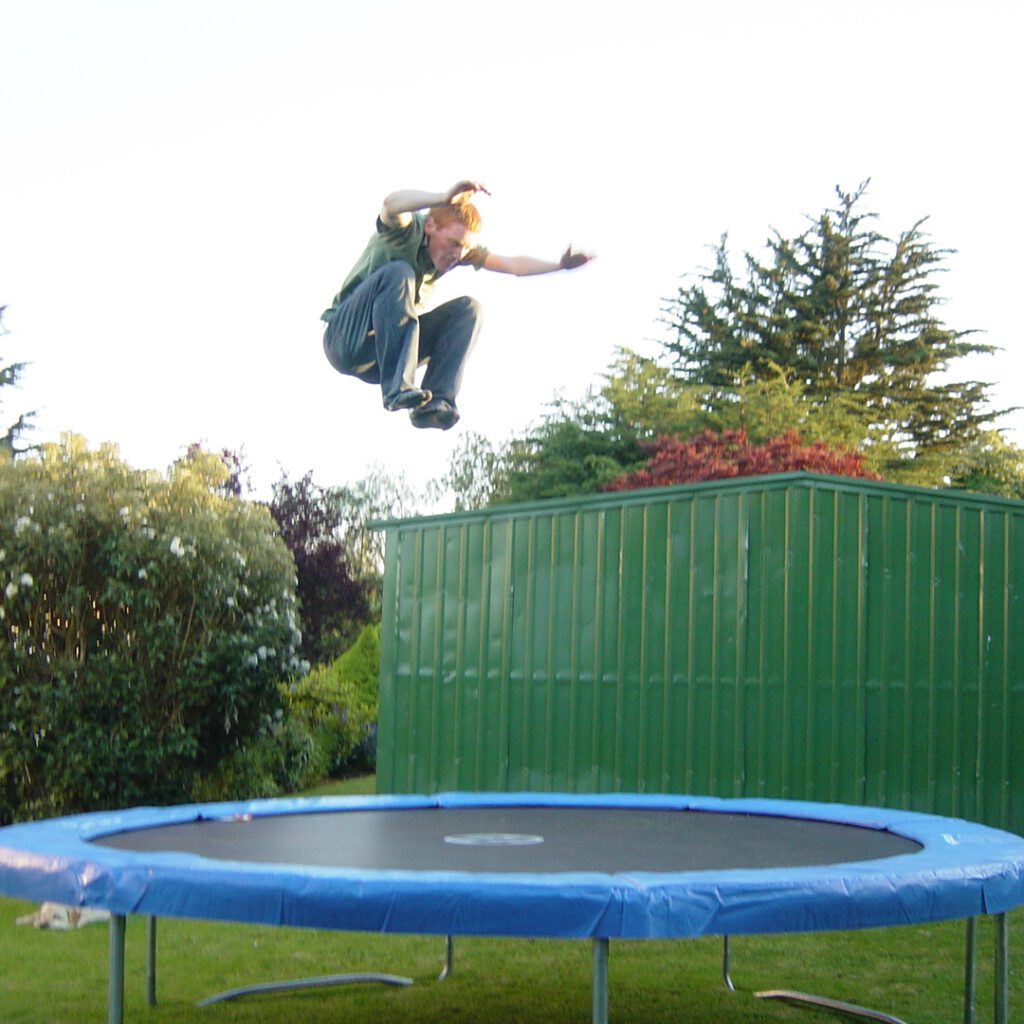
Elasticity refers to a material’s ability to deform when under stress, then return to its original shape once the stress is removed. Trampoline beds are made of highly elastic materials, typically a synthetic fibre mesh, that can stretch and snap back repeatedly.
The trampoline bed’s elasticity is what gives you that bouncing sensation. When you land on the bed, your weight causes it to stretch downwards. But the bed wants to return to its original shape, so it pulls back and propels you up into the air. This cycle of stretching and snapping back happens very quickly, which is why you get that fun, bouncy experience.
Hooke’s Law states that the force needed to compress or extend a spring is directly proportional to the distance it is stretched or compressed. This means that the more a trampoline bed is stretched, the greater the force pulling it back into shape. Trampoline designers use Hooke’s Law to determine the correct tension and elasticity for beds to get the maximum bounce. If a bed is too loose, it won’t provide enough lift. But if it’s too tight, it won’t have enough give and will feel hard on impact. Finding the sweet spot is key to an optimal trampolining experience.
With the right amount of elasticity, trampoline beds are able to convert the energy from your impact into kinetic energy to send you soaring skyward. The elastic fibres act like springs, storing energy on the stretch and releasing it on the rebound. This energy exchange, happening in a split second, is what gives trampolining its characteristic zing.
Energy Transfer on Trampolines

The Physics of Bouncing
When you bounce on a family trampoline, your body transfers energy between two forms: potential energy and kinetic energy. Potential energy is the energy stored in your body due to its position and the trampoline’s stretched springiness. As you jump up, this potential energy converts into kinetic energy – the energy of motion.
At the top of your bounce, your kinetic energy is maximised as you reach the peak of your jump. But gravity causes you to fall back down, and your kinetic energy converts back into potential energy as the trampoline springs compress. This cycle repeats with each bounce, allowing you to jump higher and higher.
The trampoline’s elasticity is key. As its springs compress when you land, they absorb the kinetic energy from your fall and store it as potential energy. They then spring back, releasing that energy to launch you up again. With each bounce, some energy is lost as heat due to friction and drag. But the trampoline returns a large portion of your energy, enabling those exhilarating long bounces.
The transfer between potential and kinetic energy with each bounce is what allows trampolines to make you feel nearly weightless for a short time. By understanding these energy conversions, you can learn techniques to get maximum bounce for your jump. Bend your knees on landing to allow for maximum spring compression, and jump upwards with straight legs and pointed toes at the peak of each bounce. Happy bouncing!
Factors Affecting Bounce
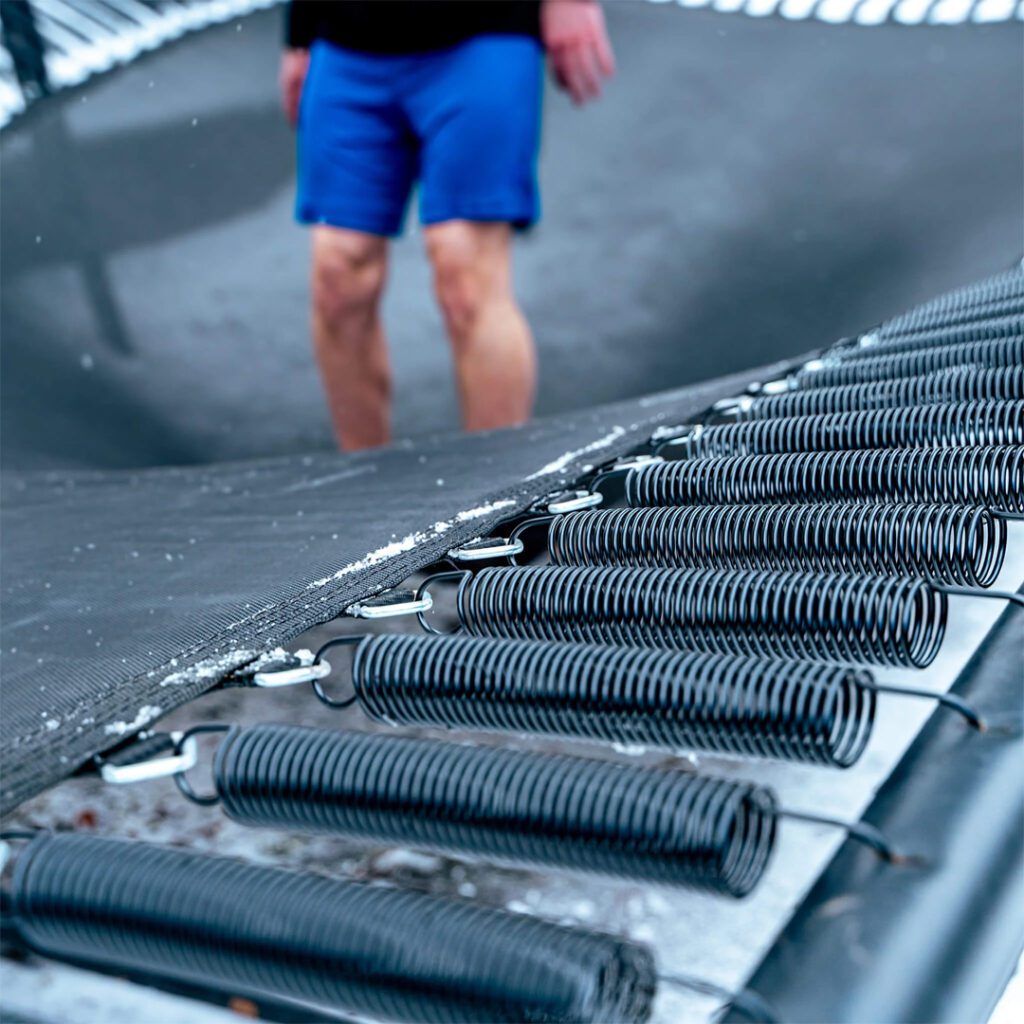
Your Weight
The more you weigh, the higher you will bounce. As you jump onto the trampoline, your body transfers energy into the bed. The heavier you are, the more energy is transferred, which is then released back to you, sending you flying up. Lighter individuals won’t transfer as much energy, so they won’t bounce as high.
Spring Tension
The tension of the springs supporting the trampoline bed also affects how high you will bounce. Tighter, stiffer springs are able to store more of the energy from your jump and release it back to you, giving you a bigger boost up. Looser, more flexible springs won’t provide as much lift. Many trampolines allow you to adjust the spring tension to suit different weights and preferences.
Surface Area
A larger trampoline bed, with more surface area, will typically provide higher bounces than a smaller bed. With a bigger bed, there are more springs to capture and release the energy from your jump. Additionally, a larger bed gives you more room to build up speed and momentum before hitting the “sweet spot” in the centre of the bed, where you will get the maximum bounce. Of course, a bigger trampoline also means a bigger investment, more space required, and higher maintenance.
By understanding how these factors—your weight, the spring tension, and the size of the trampoline—influence the amount of energy that can be stored and released with each bounce, you’ll be leaping higher in no time. But remember, always exercise caution and proper safety on the trampoline to avoid unwanted collisions or injuries.
Safety Considerations
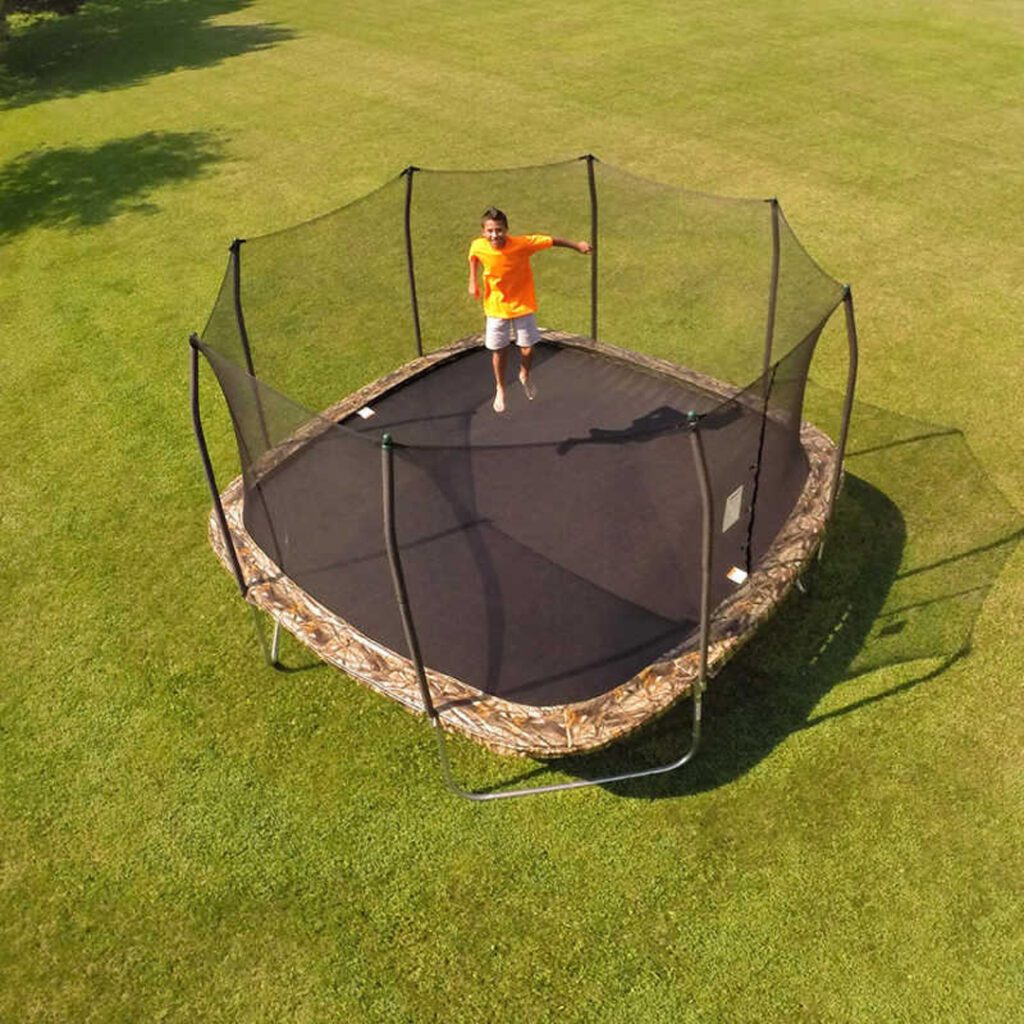
Know Your Limits
The higher and faster you bounce, the more force you’ll experience on impact. Start slowly to get a feel for how the trampoline surface responds to different amounts of force. Work your way up in height and speed as you gain more experience. Pushing yourself beyond what you can handle is a recipe for injury.
Bounce in the Centre
The middle of the trampoline bed has the most give, allowing you to bounce higher while reducing stress on your joints. Bouncing near the edge of the bed can put extra torque on your ankles and knees. Keeping everyone bouncing in the centre area will also prevent collisions.
Follow the Rules
Most trampoline parks and recreational areas will have rules posted for safety and etiquette. Follow guidelines on maximum occupancy, height requirements, and proper jumping techniques. Things like somersaults, flips, and “cracking the whip” can easily lead to loss of control and injury for yourself or others.
Use Safety Equipment
Consider wearing protective gear like helmets, wrist guards, and knee pads, especially when first starting out. They can prevent fractures and sprains as you’re learning how to balance and land properly. Safety nets or padding around the trampoline can also minimise the risk of falling off the edge.
Bouncing on a trampoline can be great fun when done responsibly. By understanding the physics involved and following some basic safety tips, you’ll be leaping and bounding in no time while avoiding unwanted trips to the emergency room. So go on, unleash your inner Tigger – but do so carefully!
Innovations in Trampoline Design
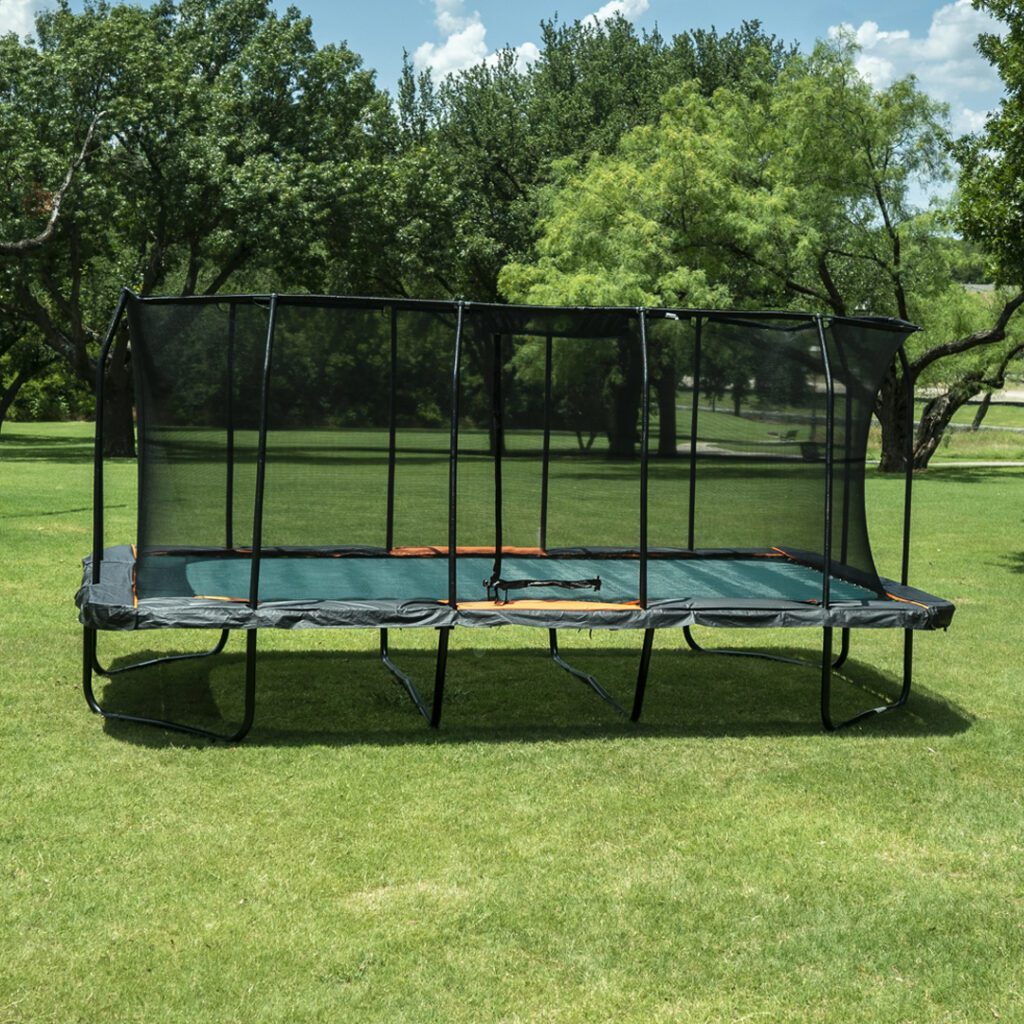
Springs and Cushioning
The springs and trampoline pads on trampolines have seen significant improvements. Originally, trampolines used metal springs that could pinch skin or break bones if landed on incorrectly. Now, many use fibreglass rods or straps which flex to provide lift but won’t pinch.Thicker, high-density foam padding covers the springs and frame for extra protection.
Safety Nets
Many trampolines now come with safety nets surrounding the jumping surface. The nets prevent falls from the trampoline and collisions with the springs and frame. They’re made of a soft yet durable mesh that gives slightly when jumped or fallen into, absorbing energy to prevent injury. The nets can be secured to poles around the trampoline or attached directly to the jumping bed.
Reinforced Frames
Round trampolines with metal tubes for frames were once standard but provided uneven bounce and stability. Many trampolines now have reinforced square or rectangular frames made of galvanised steel. These provide a larger jumping surface, more even bounce, and greater stability. The sturdier frames also last longer and hold up better to frequent use and weather.
Bounce Performance
Some trampolines enhance bounce performance using technologies like stronger, tightly-coiled springs, “springless” fibreglass rods, and tightly-woven UV-resistant jumping beds. These provide more lift and enable higher jumps while maintaining control and stability. Performance trampolines allow skilled jumpers to perform somersaults, twists, and other aerial manoeuvres. However, they may not be ideal for beginners or recreational jumping.
With these innovations, trampolines have become safer, bouncier, and more versatile. Backyard trampolining has never been so advanced yet accessible. The future is bright for this fun activity.
Conclusion
From Hooke’s law to the conservation of energy, it’s amazing how much science is at play on those stretchy surfaces. Whether you’re a kid just looking to get some air or a gymnast perfecting your routine, trampolines provide a fun way to explore concepts like elastic potential energy and kinetic energy. We learned how the elasticity of the bed, combined with your body’s velocity, determines how high you can bounce. Next time you’re at the park, see if you can put what you learned here into action. Try altering your technique or getting friends to join you – see what factors make for the biggest, safest bounces. The world of physics doesn’t have to be all chalkboards and textbooks; with trampolines, you can experience it in a hands-on (or feet-on!) way.





